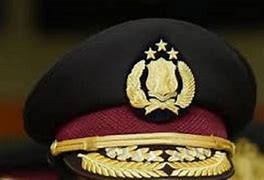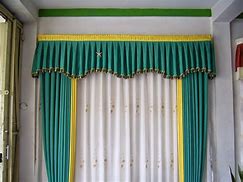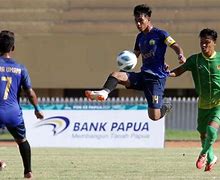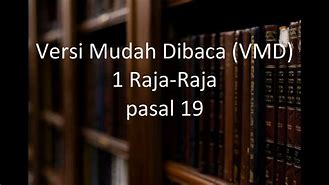
Titles, styles, honours, and arms
Philip held many titles throughout his life. Originally holding the title and style of a prince of Greece and Denmark, Philip abandoned these royal titles before he married and was thereafter created a British duke, among other noble titles.[50] Elizabeth formally issued letters patent in 1957 making him a British prince.[90]
Military appointments
In 1996, Prince Albert received the Eagle Award from the United States Sports Academy. The Eagle Award is the academy's highest international honor and was awarded to Prince Albert for his significant contributions in promoting international harmony, peace and goodwill through the effective use of sport.[115]
On 23 October 2009, Prince Albert was awarded the Roger Revelle Prize for his efforts to protect the environment and to promote scientific research.[116] This award was given to Prince Albert by the Scripps Institution of Oceanography in La Jolla, California.[117] Prince Albert is the second recipient of this prize.[118]
In October 2017, Prince Albert received the Lowell Thomas Award from The Explorers Club, a non-profit group that promotes scientific exploration. The award is presented by the president of the club on special occasions to groups of outstanding explorers. The Club cited Prince Albert's dedication to the protection of the environment, commemorating his status as the first head of state to reach both the North and South poles.[119]
On 14 October 2019 at the Comenius University in Bratislava, he received the honorary title "doctor honoris causa" for activities in the field of protection of natural and cultural heritage within his efforts to combat climate change.[120]
As Monaco's head of state, Prince Albert II is depicted on both standard-issue and collector's coins, such as the €5 silver Prince Albert II commemorative coin, the first commemorative coin with his effigy, minted in 2008. On the obverse, the prince is depicted in profile with his name on the top of the coin. On the reverse, the Grimaldi coat of arms appears; around it, the words "Principauté de Monaco" (Principality of Monaco) also appear along with the nominal monetary value of the coin.[121]
Consort of Queen Elizabeth II from 1952 to 2021
Prince Philip, Duke of Edinburgh (born Prince Philip of Greece and Denmark,[1] later Philip Mountbatten; 10 June 1921[fn 1] – 9 April 2021), was the husband of Queen Elizabeth II. As such, he was the consort of the British monarch from his wife's accession on 6 February 1952 until his death in 2021, making him the longest-serving royal consort in history.
Philip was born in Greece into the Greek and Danish royal families; his family was exiled from the country when he was eighteen months old. After being educated in France, Germany, and the United Kingdom, he joined the Royal Navy in 1939, when he was 18 years old. In July 1939, Philip began corresponding with the 13-year-old Princess Elizabeth, the elder daughter and heir presumptive of King George VI. During the Second World War, he served with distinction in the British Mediterranean and Pacific fleets.
In the summer of 1946, the King granted Philip permission to marry Elizabeth, then aged 20. Before the official announcement of their engagement in July 1947, Philip stopped using his Greek and Danish royal titles and styles, became a naturalised British subject, and adopted his maternal grandparents' surname Mountbatten. In November 1947, he married Elizabeth, was granted the style His Royal Highness and was created Duke of Edinburgh, Earl of Merioneth, and Baron Greenwich. Philip left active military service when Elizabeth ascended the throne in 1952, having reached the rank of commander. In 1957, he was created a British prince. Philip had four children with Elizabeth: Charles, Anne, Andrew, and Edward.
A sports enthusiast, Philip helped develop the equestrian event of carriage driving. He was patron, president, or member of over 780 organisations, including the World Wide Fund for Nature, and served as chairman of The Duke of Edinburgh's Award, a youth awards programme for people aged 14 to 24.[2] Philip is the longest-lived male member of the British royal family. He retired from royal duties in 2017, aged 96, having completed 22,219 solo engagements and 5,493 speeches since 1952, and died at the age of 99 at Windsor Castle.
Charities and patronages
Philip was patron of some 800 organisations, particularly focused on the environment, industry, sport, and education. His first solo engagement as Duke of Edinburgh was in March 1948, presenting prizes at the boxing finals of the London Federation of Boys' Clubs at the Royal Albert Hall.[97] He was president of the National Playing Fields Association (now known as Fields in Trust) for 64 years, from 1947 until his grandson Prince William took over the role in 2013.[98] He was appointed a fellow of the Royal Society in 1951.[99][100] In 1952, he became patron of The Industrial Society (since renamed The Work Foundation).[101] In the same year, and after his father-in-law's death, he took over the role of the Ranger of Windsor Great Park, overseeing its protection and maintenance.[102] From 1955 to 1957, Philip was president of The Football Association and also served two terms as president of the Marylebone Cricket Club, with his tenures starting in 1949 and 1974, respectively.[103][104] In the same decade, he became the first patron of Lord's Taverners, a youth cricket and disability sports charity, for which he organised fundraising events.[105] Between 1959 and 1965 Philip was the president of BAFTA.[106] He helped found the Australian Conservation Foundation in 1963 and the World Wildlife Fund in 1961 and served as the latter's UK president from 1961 to 1982, international president from 1981, and president emeritus from 1996.[86][107] He was also president of the Zoological Society of London for two decades and was appointed an honorary fellow in 1977.[108][109] Despite his involvement in initiatives for conserving nature, he was also criticised for practices such as fox hunting and shooting of game birds[107] and the killing of a tiger in India in 1961.[110] He was president of the International Equestrian Federation from 1964 to 1986.[111] In 1980 he became world champion in four-in-hand driving with the British national team.[112] He served as chancellor of the universities of Cambridge, Edinburgh, Salford, and Wales.[113] In 1965, at the suggestion of Harold Wilson, Philip became chair to a scheme set up for awarding industrial innovations, which later became known as The Queen's Awards for Enterprise.[114] In the same year, Philip became president of the Council of Engineering Institutions and in that capacity he assisted with the inception of the Fellowship of Engineering (later the Royal Academy of Engineering), of which he later became the senior fellow.[115] He also commissioned the Prince Philip Designers Prize and the Prince Philip Medal to recognise designers and engineers with exceptional contributions.[115][116] In 1970 he was involved with the founding of The Maritime Trust for restoring and preserving historic British ships.[117] In 2017 the British Heart Foundation thanked Philip for being its patron for 55 years, during which time, in addition to organising fundraisers, he "supported the creation of nine BHF-funded centres of excellence".[118] He was an honorary fellow of St Edmund's College, Cambridge.[119]
At the beginning of 1981 Philip wrote to his son Charles counselling him to make up his mind to either propose to Lady Diana Spencer or break off their courtship.[120] Charles felt pressured by his father to make a decision and did so, proposing to Diana in February.[121] They married five months later. By 1992 the marriage had broken down. Elizabeth and Philip hosted a meeting between Charles and Diana, trying to effect a reconciliation, but without success.[122] Philip wrote to Diana, expressing his disappointment at Charles's and her extra-marital affairs and asking her to examine both his and her behaviour from the other's point of view.[123] She found the letters hard to take but appreciated that he acted with good intent.[124] Charles and Diana separated in 1992[125] and divorced in 1996.[126]
A year after the divorce, Diana was killed in a car crash in Paris on 31 August 1997. At the time, Philip was on holiday at Balmoral with the extended royal family. In their grief, Diana's sons, Princes William and Harry, wanted to attend church, so Elizabeth and Philip took them that morning.[127] For five days, the royal couple shielded their grandsons from the ensuing press interest by keeping them at Balmoral, where they could grieve in private.[127] The royal family's seclusion caused public dismay,[127] but the public mood changed after a live broadcast made by Elizabeth on 5 September.[128] Uncertain as to whether they should walk behind their mother's coffin during the funeral procession, William and Harry hesitated.[128] Philip told William: "If you don't walk, I think you'll regret it later. If I walk, will you walk with me?"[128] On the day of the funeral, Philip, William, Harry, Charles, and Diana's brother, Earl Spencer, walked through London behind her gun carriage.[128] Over the next few years, Mohamed Al-Fayed, whose son Dodi Fayed was also killed in the crash, claimed that Philip had ordered the death of Diana and that the accident was staged. The inquest into Diana's death concluded in 2008 that there was no evidence of a conspiracy.[129]
In April 2009, Philip became the longest-serving British royal consort, surpassing Charlotte of Mecklenburg-Strelitz, wife of George III.[130] He became the oldest-ever male British royal in February 2013 and the third-longest-lived member of the British royal family (following Princess Alice, Duchess of Gloucester, and Queen Elizabeth The Queen Mother) in April 2019.[131] Personally, he was not enthused about living an extremely long life, remarking in a 2000 interview (when he was 79) that he could not "imagine anything worse" and had "no desire whatsoever" to become a centenarian, saying "bits of me are falling off already".[132]
In 2008 Philip was admitted to King Edward VII's Hospital, London, for a chest infection; he walked into the hospital unaided, recovered quickly,[133] and was discharged three days later.[134] After the Evening Standard reported that Philip had prostate cancer, Buckingham Palace—which usually refuses to comment on health rumours—denied the story[135] and the paper retracted it.[136][137]
In June 2011, in an interview marking his 90th birthday, Philip said that he would now slow down and reduce his duties, stating that he had "done [his] bit".[138] The Queen gave him the title Lord High Admiral for his 90th birthday.[139] While staying at Sandringham House in December 2011, Philip suffered chest pains and was taken to the cardio-thoracic unit at Papworth Hospital, Cambridgeshire, where he underwent successful coronary angioplasty and stenting.[140] He was discharged a few days later.[141]
In June 2012, during the celebrations in honour of his wife's diamond jubilee, Philip was taken from Windsor Castle to King Edward VII's Hospital suffering from a bladder infection.[142] He was subsequently discharged.[143] After a recurrence of infection in August 2012, while staying at Balmoral Castle, he was admitted to Aberdeen Royal Infirmary for five nights as a precautionary measure.[144] In June 2013, Philip was admitted to the London Clinic for an exploratory operation on his abdomen, spending 11 days in hospital.[145] In May 2014, he appeared in public with a bandage on his right hand after a "minor procedure" was performed in Buckingham Palace the preceding day.[146] Tony Abbott's surprise 2015 decision to make Philip a Knight of the Order of Australia was widely criticised in the country and contributed to Abbott's ouster as Australian prime minister.[147][148][149] In June 2017, Philip was taken from Windsor to London and admitted to King Edward VII's Hospital after being diagnosed with an infection.[150] He spent two nights in the hospital and was unable to attend the State Opening of Parliament and Royal Ascot.[151][152]
Environmental Interests
In 2001, at the 36th Congress of the Mediterranean Science Commission held in the Principality, the CIESM Member States unanimously elected Monaco in the person of Prince Albert to the presidence of the commission.[12]
The year 2007 was declared as (International) Year of the Dolphin by the United Nations and United Nations Environment Programme.[66] Prince Albert served as the International Patron of the "Year of the Dolphin", saying "The Year of the Dolphin gives me the opportunity to renew my firm commitment towards protecting marine biodiversity. With this strong initiative we can make a difference to save these fascinating marine mammals from the brink of extinction."[67]
The Zoological Garden of Monaco (Jardin Animalier) was founded by Prince Rainier in 1954. Rainier was petitioned unsuccessfully for many years by Virginia McKenna, founder of the Born Free Foundation, to release a pair of leopards at the zoo.[68] Prince Albert met McKenna after his accession to the throne, and agreed to release the leopards as well the zoo's hippo and camel.[citation needed] He intends to convert the Jardin into a zoo for children.[68]
In January 2009, Prince Albert left for a month-long expedition to Antarctica, where he visited 26 scientific outposts and met with climate-change experts in an attempt to learn more about the impact of global warming on the continent.[69] During the trip, he stopped at the South Pole, making him the only incumbent head of state to have visited both poles.[70][71]
In June 2009, Prince Albert co-authored an op-ed published in The Wall Street Journal with Charles Clover, the author of The End of the Line, a book about overfishing and ocean conservation issues that had recently been made into a documentary by Rupert Murray. In the piece, Prince Albert and Clover note that bluefin tuna have been severely overfished in the Mediterranean, and decry the common European Union practice of awarding inflated quotas to bluefin fleets.[72] Albert also announced that Monaco would seek to award endangered species status to the Mediterranean bluefin, Thunnus thynnus, (also called the Northern bluefin) under the Convention on International Trade in Endangered Species (CITES). This was the first time a nation had called for the inclusion of Mediterranean bluefin under CITES since Sweden[72] at the 1992 CITES Conference, which was vehemently opposed by Japan who eventually threatened retaliation through trade barriers.[73] Sweden withdrew its proposal.
On 16 July 2009, France declared that it too would seek to have Mediterranean bluefin listed as an endangered species.[74] Only hours later, the United Kingdom followed suit.[75]
On 19 September 2017, Prince Albert expressed his great interest for the preliminary draft of the Global Pact for the Environment presented by French President Emmanuel Macron in the context of the 72nd session of the United Nations General Assembly.[76] He added that he will be very attentive to the future of this Pact, which he qualified as a "universal, legally binding agreement, which recognises the right of future generations to sustainable development."[76]
After having met Torres Strait Islander artist and activist Alick Tipoti in 2016, Prince Albert went to stay with his family on Badu Island, and collaborated with him on the film Alick and Albert (2021), a feature-length documentary film about the future of the oceans, and how climate change affects people in the Torres Strait Islands as well as Monaco.[77][78][79] The film had its world premiere at the Brisbane International Film Festival in October 2021.[80]
On 12 February 2020, Albert and Victor Vescovo reached the bottom of Calypso Deep, a depth of 16,762 ft, in a submarine. They were only the second team to do so after a French group in 1965.[81]
Personality and image
Philip's down-to-earth manner was attested to by a White House butler, who recalled that, on a visit in 1976, Philip engaged him and a fellow butler in a conversation and poured them drinks.[209][fn 5] As well as a reputation for bluntness and plain speaking,[211] Philip was noted for occasionally making observations and jokes that have been construed as either funny, or as gaffes: awkward, politically incorrect, or even offensive, but sometimes perceived as stereotypical of someone of his age and background.[212][213][214][215][216] In an address to the General Dental Council in 1960, he jokingly coined a new word for his blunders: "Dontopedalogy is the science of opening your mouth and putting your foot in it, a science which I have practised for a good many years." Later in life, he suggested his comments may have contributed to the perception that he was "a cantankerous old sod".[218]
In a private conversation with British students from Xi'an's Northwest University during a state visit to China in 1986, Philip joked: "If you stay here much longer, you'll go slit-eyed." The British press reported on the remark as indicative of racial intolerance, but the Chinese authorities were reportedly unconcerned. Chinese students studying in the UK, an official explained, were often told in jest not to stay away too long, lest they go "round-eyed". His comment did not affect Sino-British relations, but it shaped his reputation. Philip also made comments on the eating habits of Cantonese people, stating: "If it has four legs and is not a chair, has wings and is not an airplane, or swims and is not a submarine, the Cantonese will eat it."[222] In Australia he asked an Indigenous Australian entrepreneur: "Do you still throw spears at each other?"[223]
In 2011 historian David Starkey described Philip as a kind of "HRH Victor Meldrew".[224] For example, in May 1999, British newspapers accused Philip of insulting deaf children at a pop concert in Wales by saying: "No wonder you are deaf listening to this row."[225] Later, Philip wrote: "The story is largely invention. It so happens that my mother was quite seriously deaf and I have been Patron of the Royal National Institute for the Deaf for ages, so it's hardly likely that I would do any such thing."[226] When he and Elizabeth met Stephen Menary, an army cadet blinded by a Real IRA bomb, and Elizabeth enquired how much sight he retained, Philip quipped: "Not a lot, judging by the tie he's wearing." Menary later said: "I think he just tries to put people at ease by trying to make a joke. I certainly didn't take any offence."[227] Philip's comparison of prostitutes and wives was also perceived as offensive after he reportedly stated: "I don't think a prostitute is more moral than a wife, but they are doing the same thing."[222]
To mark the centenary of Philip's birth in June 2021, the Royal Collection Trust held an exhibition at Windsor Castle and the Palace of Holyroodhouse. Titled Prince Philip: A Celebration, it showcased around 150 personal items related to him, including his wedding card, wedding menu, midshipman's logbook from 1940 to 1941, Chair of Estate, and the coronation robes and coronet that he wore for his wife's coronation in 1953.[228][229] George Alexis Weymouth's portrait of Philip in the ruins of Windsor Castle after the fire of 1992 formed part of a focus on Philip's involvement with the subsequent restoration.[229]
The Royal Horticultural Society also marked Philip's centenary by breeding a new rose in his honour, christened "The Duke of Edinburgh Rose", created by British rose breeder Harkness Roses. Elizabeth, as patron of the society, was given the deep pink commemorative rose in honour of her husband, and she remarked that "It looks lovely". A Duke of Edinburgh Rose has since been planted in the mixed rose border of Windsor Castle's East Terrace Garden. Philip played a major role in the garden's design.[230][231]
In September 2021, the Royal National Lifeboat Institution honoured Philip by naming their new state-of-the-art lifeboat Duke of Edinburgh. The tribute was initially planned to mark his 100th birthday.[232] In the same month, a documentary initially planned for his centenary was broadcast on BBC One under the title Prince Philip: The Royal Family Remembers, with contributions from his children, their spouses, and seven of his grandchildren.[233]
Philip has been portrayed by several actors, including Stewart Granger (The Royal Romance of Charles and Diana, 1982), Christopher Lee (Charles & Diana: A Royal Love Story, 1982), David Threlfall (The Queen's Sister, 2005), James Cromwell (The Queen, 2006), and Finn Elliot, Matt Smith, Tobias Menzies, and Jonathan Pryce (The Crown, 2016 onwards).[234][235] He also appears as a fictional character in Nevil Shute's novel In the Wet (1952), Paul Gallico's novel Mrs. 'Arris Goes to Moscow (1974), Tom Clancy's novel Patriot Games (1987), and Sue Townsend's novel The Queen and I (1992).[236]
Nama Rafathar diambil dari bahasa Arab, Malik berasal dari nama almarhum kakek Raffi
Nama yang dimiliki Rafathar ternyata memiliki maknanya tersendiri lho, Ma.
Raffi sempat menjelaskan bahwa nama Rafathar diambil dari bahasa Arab yang berarti anak pertama yang ditinggikan derajatnya. Sementara nama Malik diambil Raffi dari nama mendiang sang kakek yang memiliki arti penguasa raja.
Kemudian, nama Ahmad pada Rafathar merupakan nama keluarga Raffi yang kabarnya sempat disarankan oleh mendiang papanya Raffi melalui mimpi.
Dulu, Rafathar sempat dipanggil warganet dengan sebutan Embul
Saking populernya, Rafathar dulu memang sempat mencuri perhatian warganet. Oleh karena itulah, Rafathar akhirnya punya panggilan kesayangan dari warganet di masa lalu. Adapun panggilan kesayangan itu adalah 'Embul'.
Pemberian nama khusus itu ternyata bukan tanpa alasan. Kabarnya, nama panggilan Embul diberikan warganet karena Rafathar saat baru lahir memiliki pipi yang cukup berisi hingga membuat hidungnya tampak pesek.
Kini, Rafathar telah tumbuh menjadi anak laki-laki dan akan menjadi seorang remaja.
Family, infancy and exile from Greece
Prince Philip (Greek: Φίλιππος, romanised: Phílippos)[3] of Greece and Denmark was born on 10 June 1921 on the dining room table in Mon Repos, a villa on the Greek island of Corfu. He was the only son and fifth and final child of Prince Andrew of Greece and Denmark and his wife, Princess Alice of Battenberg.[5] Philip's father was the fourth son of King George I and Queen Olga of Greece, and his mother was the eldest child of Louis Mountbatten, 1st Marquess of Milford Haven, and Victoria Mountbatten, Marchioness of Milford Haven (formerly Prince Louis of Battenberg and Princess Victoria of Hesse and by Rhine). A member of the House of Glücksburg, Philip was a prince of both Greece and Denmark by virtue of his patrilineal descent from George I of Greece and George's father, Christian IX of Denmark; he was from birth in the line of succession to both thrones.[fn 2] Philip's four elder sisters were Margarita, Theodora, Cecilie, and Sophie. He was baptised in the Greek Orthodox rite at St. George's Church in the Old Fortress in Corfu. His godparents were his paternal grandmother, Queen Olga of Greece; his cousin George, Crown Prince of Greece; his uncle Lord Louis Mountbatten; and the municipality of Corfu, represented by its mayor, Alexandros Kokotos,[9] and by the president of the council, Stylianos Maniarizis.[10]
Shortly after Philip's birth, his maternal grandfather died in London. The Marquess of Milford Haven was a naturalised British subject who, after a career in the Royal Navy, had renounced his German titles and adopted the surname Mountbatten—an Anglicised version of Battenberg—during the First World War, owing to anti-German sentiment in the United Kingdom. After visiting London for his grandfather's memorial service, Philip and his mother returned to Greece, where Prince Andrew had remained to command a Greek Army division embroiled in the Greco-Turkish War.[11]
Greece suffered significant losses in the war and the Turks made substantial gains. Philip's uncle and high commander of the Greek expeditionary force, King Constantine I, was blamed for the defeat and was forced to abdicate in September 1922. The new military government arrested Andrew, along with others. General Georgios Hatzianestis, who was commanding officer of the army, and five senior politicians were arrested, tried, and executed in the Trial of the Six. Andrew's life was also believed to be in danger and Alice was under surveillance. Finally, in December, a revolutionary court banished Andrew from Greece for life.[12] The British naval vessel HMS Calypso evacuated Andrew's family, with Philip carried to safety in a fruit box.[13]























